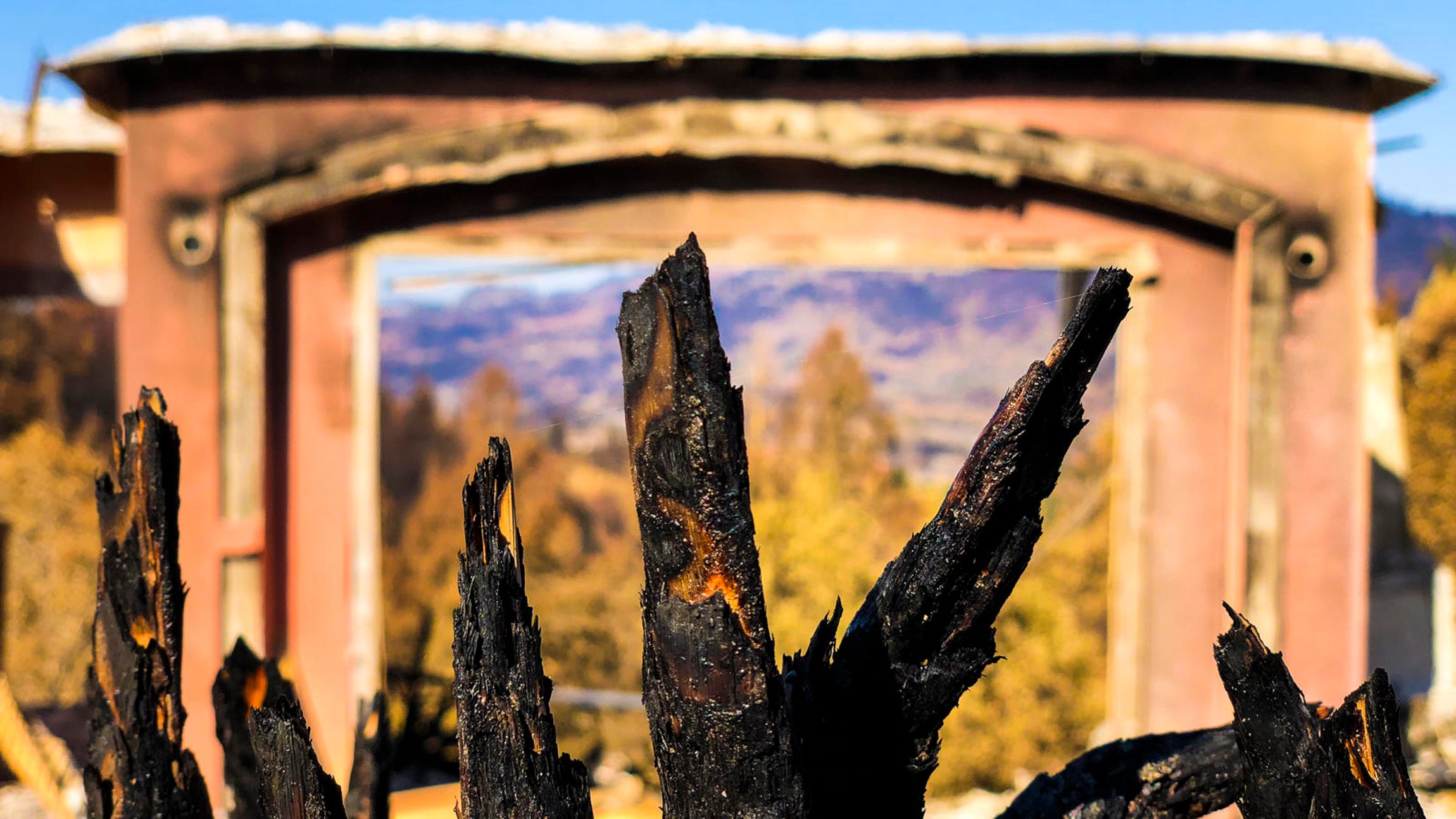
California's wildfire devastation seen through an iPhone X
CNET senior photographer James Martin, equipped with Apple’s newest phone, spends a day with the EPA's cleanup crew in a city hit hard in the largest wildfire in the state's history.
Standing in the remains of what was once her bedroom, a woman in her 40s wearing a red shirt wields a wood-framed wire-mesh screen to sift through piles of fluffy gray ash and twisted metal. It's been three weeks since an inferno raced through California's wine country, destroying more than 8,000 buildings, but the smell of smoke still lingers in Santa Rosa, one of the cities hardest hit by the largest wildfire in the state's history.
Residents of Sonoma's county seat are beginning to comb through the ashes, returning to a devastation that's been compared to being flattened by a nuclear bomb.
The EPA surveys a property for household hazardous waste and dangerous materials in the Fountaingrove neighborhood of Santa Rosa, California.
Homes are leveled in Coffey Park and Fountaingrove, two neighborhoods in Santa Rosa, home to more than 175,000 people. The fires destroyed nearly everything, including everyday household items that are now toxic ash. That includes remnants of paint, propane, pesticides, plastics, fertilizers, gasoline and other chemicals. All that toxic debris has to be removed by the Environmental Protection Agency before any rebuilding can begin. It's the critical first step in recovery -- done before property owners can sift through what's left or before the Army Corps of Engineers can begin construction.
I was one of the first photographers to test the front and rear-facing cameras on Apple's iPhone X, which is being released Friday. I also live in the San Francisco Bay Area, where smoke and ash blanketed the region for more than a week as wildfires rampaged through Sonoma and Napa counties, just 50 miles north of the city. Now that the fires have been contained, I wanted to document what needs to be done before Napa and Sonoma counties -- some of the most beautiful spots in Northern California -- can emerge from such unimaginable devastation.
Dolls parts collected from the rubble of a home in Coffey Park, California.
I brought my DSLR, but I was curious to see if the iPhone X could handle the challenge. (Note: This isn't an iPhone X review. CNET's Scott Stein did our official take of the iPhone X.)
So I went to Santa Rosa with the EPA on Wednesday as they cleared a path through the toxic mess.
A EPA crew member gives a double thumbs up during clean-up operations in Santa Rosa, California on Wednesday November 1, 2017.
After the first half hour of shooting, I realized I didn't need to use the DSLR camera I always have with me. The iPhone X did what I needed it to do.
First steps
"We are here to collect all household hazardous waste from all the burned parcels in Sonoma County," says Tom Dunkelman, fire response leader for EPA District 9 in Northern California. Dunkelman estimates the EPA will have to clear about 6,200 parcels of property in the area.
It takes about 10 minutes to survey and remove waste from a standard-size neighborhood lot. The EPA crew here today numbers five to six technicians in full hazard gear, with other teams operating simultaneously throughout the county.
A burned out tractor in the Coffey Park neighborhood of Santa Rosa, California.
"We've been collecting since Friday," Dunkelman tells me, "so it makes this day five. So far we've cleaned up more than 2,000 properties."
The EPA has three goals. First: to prevent chemicals from further contaminating the environment. Second: to make sure it's safe for other cleanup workers to come onto the property. And third, to properly (and safely) dispose of hazardous waste.
"We know our pace will slow down as we get into the more rural parts of the county, but we're trying to get everything done as fast as possible so that everybody else can start removing the ash and debris and start rebuilding," he says.
Amidst the rubble are signs of life.
I watch crews move through each parcel and identify toxic hotspots. It starts as one crew member -- kitted out in a white protective suit, yellow boots, green gloves and respirator -- walks around with a safety monitor to make sure the air is safe for the others to breathe. They follow behind, probe the ashes, collect gas and chemical containers and carry them to the curb. Everyone stays clear of the unstable structures still standing.
"If we see anything unusual -- anything explosives or radioactive, asbestos -- we have a second follow-up response team that comes in to address it." Dunkelman says.
It's a long and difficult process to remove such debris.
I shot this story in one day, taking several hundred photos. I made only basic edits on the images for contrast, color and saturation, either right on the iPhone X or in Adobe Lightroom — the same as I would for any project. Closeups were often shot in Portrait Mode.
A charred statue of Buddha sits peacefully in the Coffey Park neighborhood of Santa Rosa, California.
After I got home and scanned through the photos, I was shocked by the power and beauty of the images I'd captured with a phone. The fire was more devastating than I had ever imagined. These images will make sure I never forget.
Want to help the Napa and Sonoma wine country recover? You can send donations to the American Red Cross.

